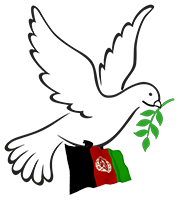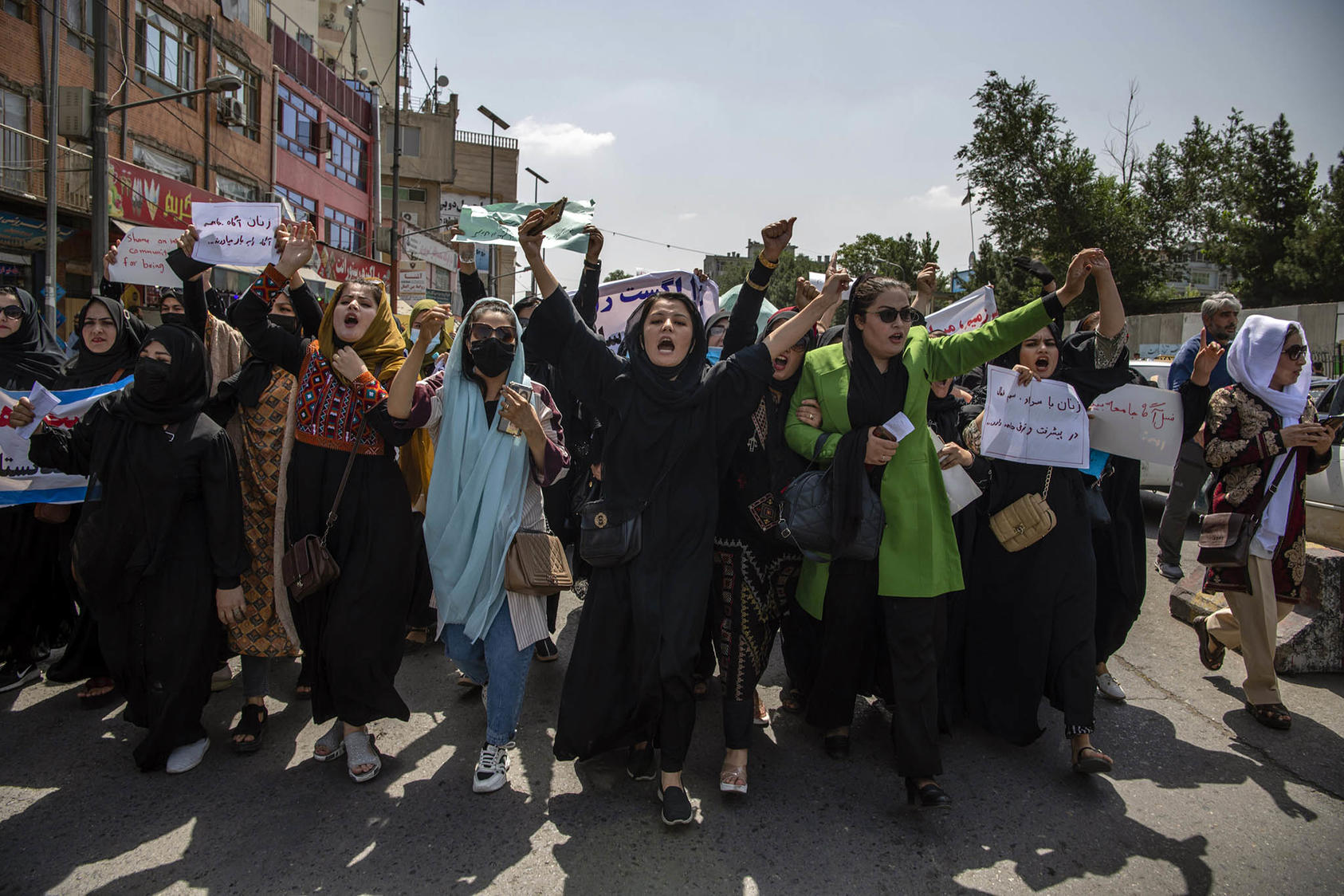Here’s how to promote projects inside Afghanistan that benefit and empower the people.
The Taliban waged an impressive military campaign and removed the prior government in August 2021. They know how to fight, but they clearly do not know how to run a government. The new Islamic Emirate of Afghanistan has not been able to get international recognition. Western nations have suspended most humanitarian aid while the World Bank and International Monetary Fund also halted payments. In February 2022, the United States seized the frozen reserves of the Afghan central bank, severely crippling the overall banking system. Just last month, the United States used part of these frozen funds to set up the Afghan Fund at the Bank for International Settlements in an effort to kickstart the economy without financially supporting the Taliban government, which has been systematically diverting international support to its own favored recipients.
The situation in Afghanistan is dire. Saad Mohseni, who has managed media operations in Afghanistan for 20 years, notes that it is difficult to overstate the multiple crises facing the country, including food shortages and sky-high food prices. According to the World Food Program, more than a third of the population is “marching to starvation,” and an astonishing 97 percent of the population risks falling below the poverty line by the end of 2022. Meanwhile, through its profound disenfranchisement of women—girls older than 12 have been banned from school—the Afghan government has become the most gender repressive in the world. Western intelligence experts are also concerned that the country is once again becoming a haven for terrorist groups. In the opinion of UN expert Richard Bennett, reprisals targeting opponents and a clampdown on freedom of expression amount to a further descent towards authoritarianism.
The Taliban have been totally unresponsive to pressures to change their fundamentalist policies despite the steadily worsening internal situation. One result is a growing resistance movement that encompasses the National Resistance Front (NRF) and the Afghanistan Freedom Front. So, the one positive aspect of the Taliban takeover—the secession of fighting—is in danger of disappearing, compounding the already dire situation.
In terms of alternatives, Anna Larson at the U.S. Institute of Peace sees stable democracy as an elusive prospect. Anatol Lieven at the Quincy Institute sees some potential for Taliban pragmatism and recommends that the Biden administration provide basic food and humanitarian assistance while keeping a watchful distance. Both Adam Weinstein and Saad Mohseni recommend sustained interaction with the Taliban to encourage moderating tendencies and help empower the realists.
The Taliban are notoriously fragmented. They had barely consolidated control in late 2021 when reports emerged of friction within the leadership. A more recent assessment notes that many policies still vary greatly from one province to the next as Taliban officials react to local community expectations. Many issues are still resolved via personal connections with influential Taliban figures, regardless of their official position in government. Opportunities abound to influence Taliban policies, not with pressures from outside but from within.
No international actor is interested in promoting new warfare in Afghanistan. The United States withdrew its troops. Russia is distracted by its intervention in Ukraine. China is involved in trade with Kabul but is not in any way promoting insurgency. Pakistan is presently overwhelmed with natural disasters. Turkey has been supportive of efforts to stabilize Afghanistan and promote development. There is some friction with Central Asia, especially low-level fighting on the Tajik border area, but none of these states has any interest in promoting the renewal of active hostilities.
On the contrary, there remains strong international interest in stabilizing Afghanistan. UN agencies and other international organization are working hard to prevent the country from slipping back into war and chaos.
Concrete Assistance
The United States and the international community want to support the Afghan people but without providing legitimacy to the repressive Talban government. There are no easy ways to help people at the bottom without helping the government at the top. The challenge is to develop projects that provide direct support to the Afghan people with a maximum impact at the lowest levels. These projects must be compatible with the Taliban’s basic principles and, where possible, satisfy the Taliban’s general interest in overall economic development. At the same time, these projects must meet international standards of transparency so that external support does not get diverted to the Taliban’s preferred projects.
Agriculture, the main component of the Afghan economy, is badly in need of basic improvements. One obvious possibility is providing better seed stocks, increasing crop diversity, and returning to traditional crops in areas where they have been deemphasized. Water usage is also a challenge as increasing temperatures and decreasing rainfall impact many areas of Afghanistan. This may require introducing more resilient crops, but even simple measures making water usage more efficient can provide significant benefits. Urban agriculture with hydroponic or aquaponic systems could also be introduced into Afghanistan, with facilities run entirely by women, which would be compatible with Taliban restrictions.
Agriculture needs a smoothly functioning support system. At the operational level, this means creating a network of reliable equipment providers and professional maintenance operations at the village level. This local network has to connect to reliable supply chains, both in supplying key ingredients such as fertilizer and in providing a route from farmer to customer, including export markets. At the high end, the support system needs to include agricultural processing. It is distressing, for example, that Afghanistan produces so much wheat but, because it has to send it abroad for processing, ends up buying foreign flour.
Opium remains a serious challenge. The previous Taliban government forbade it, but it became an important source of funds during the time of insurgency. Now that they have returned to power, the Taliban has officially condemned the drug, although practically it is difficult for them to destroy production. Fifteen years ago, there was a concerted efforted to turn opium into legitimate pharmaceutical products that are badly needed in the region. But both the U.S. and Afghan governments were against giving any legitimacy to opium, so the effort collapsed. But a new version of this approach to opium could be very attractive to sections of the current Taliban leadership as well as to international supporters.
Power generation remains a major challenge for the government, with almost total dependence on imported electricity. The most cost-effective approach is to reduce power use through increased efficiency in cities and in industries. Although earlier efforts to promote distributed local hydropower in Nangarhar province gradually faded away, the project could be revived. Solar, too, is a promising alternative for large sections of the country, as is biofuel, with a whole range of possible applications.
Education also provides a wide range of possibilities. Two are of particular interest. Afghan Education for a Better Tomorrow (AEBT) is an organization that links professors in the United States with universities in Afghanistan to provide classroom instruction at a professional level. AEBT and the Raqim Foundation also provide tele-medicine support with a satellite connection.
Transport is another area of potential foreign investment, particularly railroad expansion. A rail connection from Uzbekistan to Mazar-e-Sharif was established with help from the Asian Development Bank in 2010, but it was little used and associated rail developments languished. In 2020, another short rail link, this time from Iran into Herat, was established. Other efforts include a Five Nations Railway Corridor in the northern part of Afghanistan.
Finding Partners
There is a huge potential for projects that would directly benefit Afghans, be acceptable to the Taliban, and serve to empower local leaders and managers. The necessary starting point is assembling a local project team to identify specific projects. This team needs to discuss potential projects with local authorities and then build out a business plan, Then the team can discuss the project with potential supporters, including NGOs and international organizations. This effort needs to provide specific project outlines in some detail and with a clear route to implementation.
U.S. organizations, such as the Afghan-American Chamber of Commerce, the Society of Afghan Engineers, the Society for International Development, United States, and the Grand National Movement of Afghanistan could be very helpful in this regard. Such organizations could obviously provide technical and business support. They could also assemble working groups in specific areas of interest to identify potential projects, as well as possible staff and operational support, and assist them in the development of business plans. Finally, they could publicize projects to a wider audience including the Afghan diaspora.
Watching Afghanistan slip into greater poverty, hunger, and war is not the only alternative for those outside the country. In fact, outsiders can still partner with Afghans themselves in promoting development projects that provide concrete benefits to the population but also help to empower them to pressure the Taliban for internal change.
 Afghanistan Peace Campaign
Afghanistan Peace Campaign

